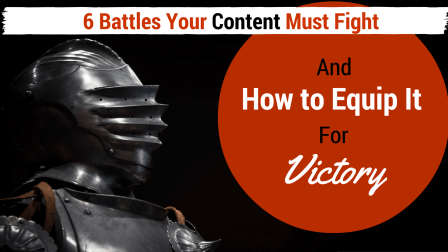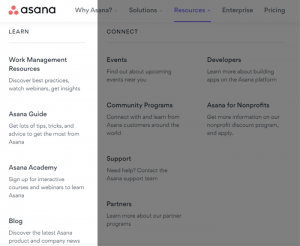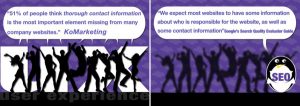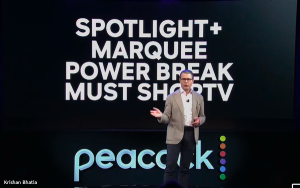Attracting eyeballs isn’t enough. Is your content actually converting visitors? Contributor Stoney deGeyter walks you through six things your content must do to truly be effective.

There’s no shortage of content advice going around, but most of what we see online focuses on ways to produce new content that will attract visitors. I’m not here to pooh-pooh that idea, because it is important. But attracting visitors to your site isn’t enough. You need to sell them, too!
In today’s ultra-competitive digital environment, you need to take every advantage possible to not only get visitors, but also convert them into customers. And just as content is used to bring them to your site, content is also the primary factor in closing the deal once they are there.
Below are six things your content must do. Because if it doesn’t, it fails at its job.
1. Introduce… everything!
Where: Home page
Why: Your home page is your catch-all introduction. It’s where people land when they don’t yet know exactly where they want to go or are trying to determine what you do.
How: Use your home page to give the visitor a broad-level glimpse of who you are and what you do. Your content should be broken down in easy-to-scan sections that direct visitors to particular pages or sections of your site.
This isn’t the place for a lot of long-form content; there should be just enough information to entice the visitor to take the next step in getting to the full content they want.
Example:

Nike uses images and very small amounts of text to highlight key areas of the site that its visitors may want to check out.
2. Share your company info
Where: About Us and Contact Us pages
Why: Unless you are a known brand, you have to convince visitors that you’re a trustworthy business partner. Background and contact information provides such assurances.
How: There are a lot of components that make About Us and Contact Us pages valuable. On your About Us page, tell your company story. When did the company start? Why was it founded? What struggles did you meet along the way? Who are the team members?
This information humanizes your company and allows the visitor to become a part of your journey in a small way. Outlining your vision and mission statements will take visitors through your past and draw them into being a part of your future.
For your Contact Us page, make it easy for customers to get in touch. It’s always tempting to limit contact, but this also limits trust with your visitors. The more options you have, the safer it feels to do business with you.
Example:

Etsy has a very robust About Us page that is loaded with company information. They even added links at the top for more information that wouldn’t all fit on the main page.
3. Provide an overview of your products
Where: Product/service category pages
Why: Many shoppers want more than a list of products to look through. The sales process is enhanced when you summarize the value of what you are offering.
How: It doesn’t take a lot, but you should have some content at the top of your product or service category pages. Provide important details that can get the reader excited about the products listed below.
You can refer to things such as product quality, testing methods, product varieties, benefits and so on. There is practically no limit to the information you can provide.
However, make sure you’re not pushing your products too far down the page. If you have more than a paragraph of content, put all but the first paragraph behind a show/hide link.
Examples:

Pella Doors provides a short paragraph at the top of their category pages, highlighting key points that shoppers may find relevant.

Instead of putting all the content at the top, Mission Workshop placed small amounts of content above each backpack sub-categorization.
4. Describe your products
Where: Product/service pages
Why: Product/service pages are the place to provide all relevant information on that particular product or service.
How: There is no single correct way to provide information about your products, but there are a lot of wrong ways. Keep the page clean, with information properly segmented for easy scanning. Don’t leave anything out. Show images, specifications, accurate description, pricing, options, reviews and so on.
Example:

Ashley Furniture provides all the critical components of an effective product page.
5. Provide assurances
Where: Everywhere
Why: You’re not just dealing with the logical part of the brain that tells visitors they need what you are selling. You also have to contend with the emotional side, which is looking for a way to rationalize the purchase against all other variables.
How: With effective content. Every bit of your content must be designed to convince your visitors that your product and your company are their best options. Don’t just meet their need with a product or service. Show them how what you are offering will solve whatever problems they currently have.
Example:

Primal Defense doesn’t just lay out what the product does, but their content explains why those things matter.
6. Give helpful tips
Where: Blog
Why: So many searchers are looking for “how to” or other valuable information. They may not be ready to buy your product, but using a blog to provide useful tips and other information establishes your brand as an authority.
How: Monitor social media channels, research keywords and just listen to what your audience wants. When you know what content they seek, provide it!
Example:

Spotify has a blog that provides updates on their service and other music-related information their users may like.
When you hear the phrase, “content is king,” don’t just think about building new pages on your site. Think about how you can maximize your existing pages. Content sells, but you have to make it do its job.
When your content has a purpose and a plan, your visitors will be much more likely to engage with and follow that plan. For you, that means a sale. For them, that means the peace of mind that comes with a quality purchase.
Some opinions expressed in this article may be those of a guest author and not necessarily Marketing Land. Staff authors are listed here.
Marketing Land – Internet Marketing News, Strategies & Tips
(86)
Report Post




